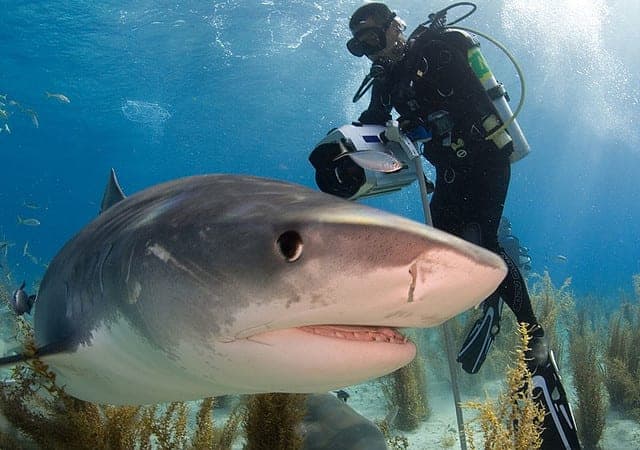People fear a lot of things. Spiders. Snakes. Clowns. Taxes. Their mother-in-law. These are some pretty natural fears, right?
I have a very heightened fear of sharks. Jaws did a number on my brain as a six year old. Score one for Mom and Dad.

photo credit: WIlly Volk via photopin cc
Add in a Spring Break experience swimming off Cocoa Beach in Florida when a guy caught a hammerhead shark about 30 feet away from me and I am now officially landlocked. Even watching movies with lots of ocean scenes right at the water’s level, I’m out!
I could tell you all about the research psychologists have conducted about the amygdala sensors in your frontal cortex when you experience a fear-inducing situation and the fight or flight nature of response, but really, fear comes down to two major reasons.
We fear the unknown, and we fear what we have no plans to face. Scuba diving in dark water is a bad idea. Swimming with sharks without a harpoon or a shark cage is an even worse idea. We need to know what we’re facing and how we plan to address it.
A recent survey by Forbes.com says the average age of a small business owner in America is 50.3 years old. Do you know what two of the leading reasons small business owners give as to why they aren’t engaging with social media?
- It’s unfamiliar to me.
- I don’t know what to do.
We fear the unknown and we fear what we have no plans to face. Without learning about social media and creating a strategy, it is impossible to overcome these obstacles.
Empower your learning about social media
For a lot of business owners, the question really is: how does my business benefit from social media? Isn’t social media just a waste of time? If people are truly wasting their time on social media, wouldn’t you want them “wasting their time” discovering your business?
When I sit down with entrepreneurs, small business owners, any client looking to engage social media, we start by finding the right platform for them. By knowing more about what social media platforms make the most sense for your business, we remove the fear of the unknown and create a safe starting place to learn and grow over time.
Create a social media strategy
Failure to plan is truly a plan for failure. This is the practical side of social media. What do I do on social media and when do I do it?
You want to add value. Let’s take Twitter, for example. I highly recommend a 4-1-1 approach to Twitter strategy. For every six tweets, four of them should be sharing other people’s content, valuable, educational, rich material that will benefit your audience. This is the part where someone sees your tweet and goes, “Wow, that’s really helpful information. Thanks, you’re the greatest.”
In that same set of six tweets, one of the tweets should be a conversation starter. If you’re a realtor, it might mean tweeting a question like “What’s one change you expect from the housing market in (city name) in 2014?” By posing a question, it gives you a chance to start a conversation, add value, and learn from other people. This is a prime way to actually be social on social media.
The sixth piece is purely promotional: check out my website, look at this blog post, here’s who I am and what I do.
By adding more value than self-promotion, you’re building an audience who respects you as a content source. You’re building credibility as an educator. You’re also promoting other people’s voices and building a reputation as a great content curator.

